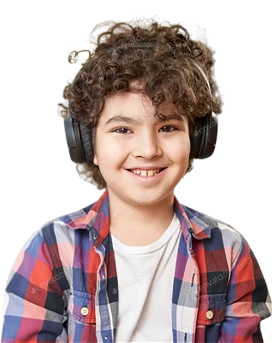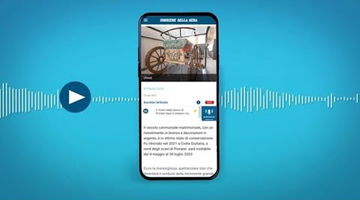
Artificial intelligence isn’t just coming to a school near you; there’s a decent chance it’s already there. But that doesn’t mean robots are taking over the classroom. In fact, AI is in no way a replacement for educators. Instead, the technology offers a new set of tools educators can use to improve learning outcomes—and address the challenges sparked by pandemic-era school closings.
So what does AI offer to teachers and their students, not in some imagined future but right now, in today’s classrooms? Here are just a few examples of current AI edtech—including ReadSpeaker’s contributions to voice technology in education.
AI in Education: 3 Examples of Contemporary Use Cases
It’s time to stop thinking of AI as future tech and recognize that it’s already helping teachers, administrators, and students. Here are a few examples of AI use cases you might find in an education system near you.
1. AI for Personalized Learning and Assessment
In a large classroom, it’s not easy to identify specific learning gaps in every student. That challenge has only grown with the onset of pandemic-related learning loss. The good news is that learning assessment is just the sort of statistical problem AI excels at solving.
Take McGraw-Hill’s online learning platform ALEKS, for instance (Assessment and Learning in Knowledge Spaces). ALEKS includes an assessment tool called ALEKS Insights, which uses machine learning to identify knowledge gaps and predict each student’s learning risks before they manifest.
ALEKS Insights interprets online assessments to spot specific skill deficits. It can even identify risky behavior, like procrastination and cramming. All that information helps educators plan class time, focus on missing skills, and get individual students assistance before they fall behind.
ALEKS isn’t the only AI-powered tool available for personalized learning. Speech-to-text developer SoapBox Labs partnered with literacy assessment company Early Bird Education to create a tool that identifies dyslexia in young readers. And testing organization ETS has established a research group—ETS AI Labs—to develop new solutions, including custom assignment recommendations for individual students.
In short, personalized learning is a powerful use case for AI in education, likely to become standard in the not-too-distant future.
2. AI for Multidisciplinary Learning
To prepare students for today’s tech-heavy world, educators strive to integrate technology into all sorts of lessons. Increasingly, AI has turned up in these multidisciplinary classroom projects. The International Society for Technology in Education (ISTE) champions this approach—and documents its effects.
ISTE offers the tale of an Alabama tech-integration coach who invited fifth-graders to build an online chatbot. The students were studying heart health, and creating the Healthy Heart Chatbot drove those lessons home while also introducing core concepts about AI technology.
“My students did not initially understand what AI was,” the coach told ISTE. “But as we went on, they got a better grasp of the abstract aspects. They were then able to look for and recognize AI in their daily lives.”
The ISTE website is full of educational AI case studies like this. These ISTE publications illustrate how incorporating AI into the classroom creates a powerful multidisciplinary experience, teaching technology and core subjects at once.
3. Conversational AI for Language Education
Digital language and literacy programs aren’t new. But when you add AI-based assessments, they become much more powerful. For example, take a literacy platform with integrated digital assessment, powered by AI. That’s what edtech developer Imagine Learning created when it partnered with SoapBox Labs on its language and literacy program.
Here’s how it works: Students read a sample text into a computer microphone. SoapBox Labs’ Fluent Reader+ scores the student’s performance based on correct reading, speech, and the difficulty of the text.
The assessment tool seeks to avoid AI bias by training its deep learning models on enormous datasets—thousands of hours of actual children speaking, reflecting diverse populations, accents, and speaking styles.
And while this example gets us started on voice technology in education, it only covers the receptive end of the conversation: speech recognition technology. The other side of the conversational AI coin is speech production, and this tech also offers powerful tools for improving learning outcomes.
Voice Technology in Education, and the Role of AI
When we discuss voice production technology, we’re essentially talking about one thing: text to speech (TTS). This software takes text as an input, and offers speech as an output. When you hear your computer, phone, or smart speaker talk, you’re probably experiencing TTS.
As we’ve discussed elsewhere in our blog, TTS is a tremendous tool for improving retention for learners. It supports the goals of Universal Design for Learning, an educational framework that recognizes different learning styles. For auditory learners, being able to listen to text is essential.
Text to speech also supports bimodal learning by enabling simultaneous reading and listening, a strategy that helps learners retain educational content. And it allows students learning second languages to hear proper pronunciation on any written text.
But not all TTS requires AI, so it doesn’t always qualify as AI in education. The highest-quality TTS voices, however, do rely on neural networks—machine learning models that create lifelike synthetic speech. ReadSpeaker’s neural TTS voices bring this quality to all learning channels, including most learning management systems (LMS), creating a better student experience.
Neural TTS is just one example of voice technology in education. It’s also just a tiny sliver of the new possibilities of AI in education. If you haven’t deployed these tools in your classroom yet, odds are you will soon.
Bring the benefits of TTS to your classroom. Contact ReadSpeaker for more information, or to get started with a demo.
Contact us
Amy Foxwell is an education technology strategist with over 20 year’s deep expertise in accessibility and digital inclusion.
At ReadSpeaker, she helps schools, universities, and corporate learning teams integrate text-to-speech solutions that improve outcomes, support diverse learners, and ensure compliance with accessibility standards.
Amy’s work is driven by a belief that every learner—whether in the classroom, on campus, or in the workplace—deserves equal access to knowledge, and that thoughtful use of technology can make that possible.


